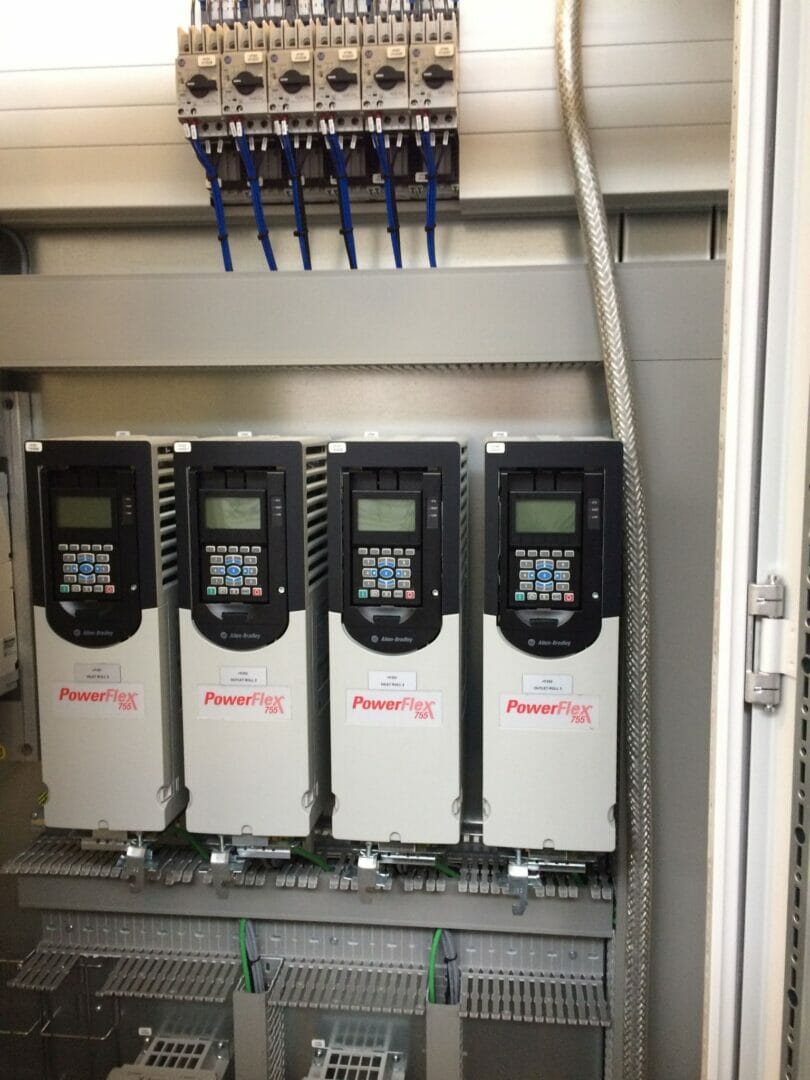Leading producer of customised airlaid production plants and machines passes multiple operational and design benefits on to end user
With new products and processes being developed all the time, many machine builders have to make their core machine designs scalable and easily adaptable to give their end-user customers the production flexibility they, in turn, need to adapt processes and products to meet constantly changing consumer and market demands. This flexibility includes the control architecture. As such machine builders have to be certain that their automation supplier can deliver powerful, integrated and scalable solutions that can help them keep pace with their customer’s demands. These automation solutions also have to offer a lifespan commensurate to that of the host machine.
Based in Galten, Denmark, Dan-Web was founded in 1976 by John Moesgaard, and has since become a leading worldwide supplier of turnkey airlaid lines, standalone web forming systems, hammer mills and other airlaid-related equipment.
The company builds heavy duty, high-speed modular production lines for multiple types of finished products. These include Latex bonded airlaid (LBAL/BBAL) products, such as table cloths, napkins, wipes, wet wipes, industrial wipes, feminine hygiene products, and packaging material. Thermal-bonded airlaid (TBAL) products include the core material for baby diapers, feminine hygiene and incontinence products, meat pads and packaging material, while Hydrogen bonded airlaid or x-bonded airlaid (HBAL/XBAL) products also form the core material for baby diapers, feminine hygiene and incontinence products. Finally, multi-bonded airlaid (MBAL) products – a combination of LBAL and TBAL – are widely used for absorbent cores and different wipes, too.
With large customers all over the globe Dan-Web typically build “one-offs”, with the machines only sharing a 60% core; the remaining 40% of the machine is determined by the customer’s precise requirements. The most unique element of the Dan-Web machines is the company’s patented form header, which, coupled to many years of knowledge, delivers long life spans and high production figures in more than 100 plants over the world.
In a recent application for a new 18,580 m2 (200,000 ft2) air-laid material factory in the USA, Dan-Web was tasked with creating a new machine around 90 m long, 12 m high and 5 m wide – one of the biggest applications Dan-Web has built to date. In this instance, the customer, a global manufacturer of specialty papers and fibre-based engineered materials, wanted the new machine to connect seamlessly with the plant’s existing Allen-Bradley® automation and factory infrastructure, which meant Dan-Web turned to Rockwell Automation for its Integrated Architecture® control solution.
The biggest challenge in this particular project was all the TCP/IP connections, which required a lot of communication and meetings between Rockwell Automation and Dan-Web to determine the optimum layout for new the Ethernet network and its connection with the existing Ethernet infrastructure. With more than 400 TCP/IP connected devices and 200 safety connections, the IO count would influence the number of programmable automation controllers (PAC) used in the solution.
Dan-Web also needed a supplier that could offer easy and rapid access to spares and technical support anywhere in the world for its high-capital-asset machines, so a supplier with a global reach was another major part of the design consideration.
For this installation, the customer dictated that Dan-Web should supply a Rockwell Automation solution, however, Lars Hansen, Electrical engineer at Dan-Web explains: “If an end user has no specific requirements for the control solution, Rockwell Automation is our preferred standard.
“The end user also had specific network products and protocols in place,” Hansen continues, “including Stratix™ 5700 and 5400 Ethernet switches. They also determined that the variable-speed drives should be Allen-Bradley PowerFlex® 525 or 753 units, and motion was to be supplied by Allen-Bradley Kinetix® 5500 servo drives. The HMIs also needed to be Allen-Bradley PanelView™ Plus 7 Performance displays. The reason for this specific set of products and requirements was the request that all of the primary automation components could communicate on TCP/IP and all could be programmed in the Studio 5000® environment. This single-programming-platform approach simplifies not only operational demands for the end user, but also maintenance and the addition of further hardware should the plant be expanded.
In total, the Rockwell Automation® Integrated Architecture solution comprised three Allen-Bradley ControlLogix programmable automaton controllers (2 x L72S and 1 x L85), 217 PowerFlex 525, 753 and 755 variable-speed drives, five Kinetix 5500 servo drives, 28 PanelView Plus Performance HMIs and 12 Stratix 5400 and 5700 Ethernet Switches. These were complemented by a variety of Allen-Bradley POINT I/O™ modules, various safety components and sensors.
Dan-Web also had significant support from Commercial and Field Service Engineers for the machine build, and Global OEM Technical Consultants (GOTC) in the programming of the PLCs, the creation of the motion profiles and the architecture and topology of the networking infrastructure. “The machine had an entirely integrated control solution,”
Hansen explains. “This integrated approach made product installation and commissioning a lot easier, which means we can get to market much quicker, which is especially important considering the time between order acceptance and delivery can sometimes be as high as two years for a line of this scale.”
“Rockwell Automation products are easy to use,” Hansen continues, “and the effective relationship between the local Rockwell Automation offices and Dan-Web removed many of the challenges. And in USA, the end user will be able to use local Rockwell Automation Field service engineers to help with the start up.
“We were able to reduce the programming and configuration time, too thanks to Studio 5000,” he elaborates, “primarily due to all the primary components being on the same network and programmed in the same single software package. This common-platform approach reduced overall wiring, because all components communicate over Ethernet, so you only need a patch cable instead of 10 separate wires mounted in a panel. All the drives deploy safety over Ethernet, too, which gives a lot of flexibility in programming the PACs and all the PanelView HMIs use the same layout, so we only needed to make one template.
“The support of the Rockwell Automation Commercial Engineers and the Global OEM Technical Consultants (GOTC) was also very good, where they helped with many different facets of the machine’s automation solution and liaised with the end customer to support the networking requirements,” Hansen concludes, “and gave us a lot of faith in the overall control solution. We have some more projects commencing in 2018, which will use the Allen-Bradley platform, too. They are a little smaller than this one, but the setup is very similar and we can reuse programming and code.”







